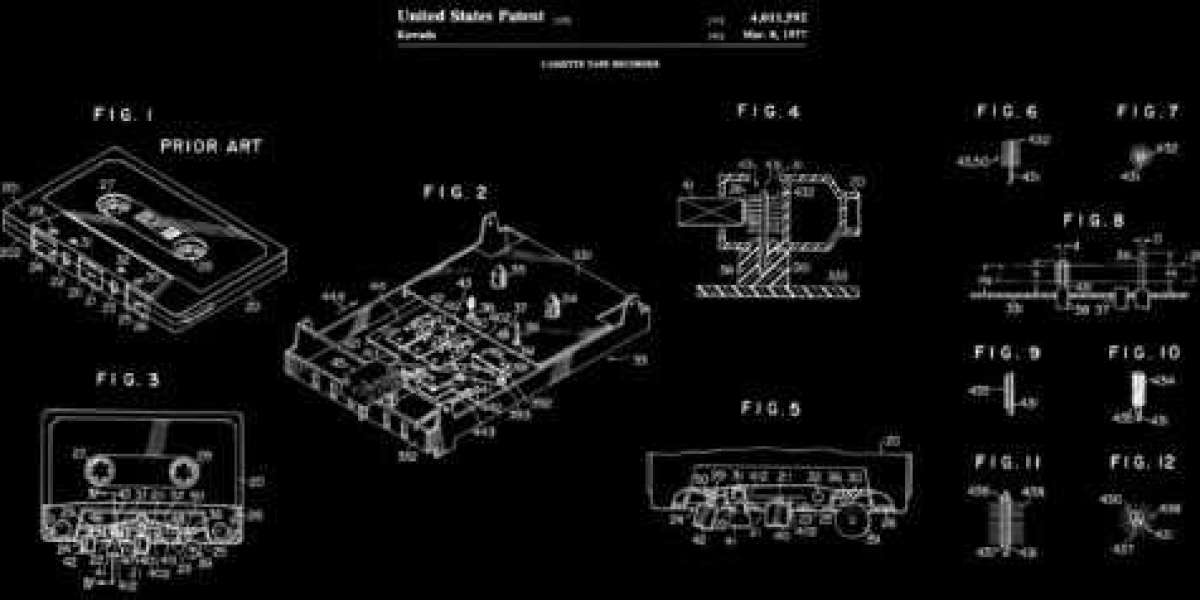The realm of intellectual property protection offers various avenues for inventors to safeguard their innovative creations. Two key options at an inventor’s disposal are utility patents and design patents. Each type of patent serves a distinct purpose, but what if the road to comprehensive protection lies in leveraging both? This article explores the strategy of maximizing patent protection by harnessing the advantages of both utility and design patents.
Understanding the Foundation: Utility and Design Patents
Utility and design patents serve as the cornerstone of intellectual property protection, each offering a unique approach to safeguarding inventions. These two distinct types of patents cater to different aspects of innovation, encompassing functionality and aesthetics, respectively. By understanding the foundation of utility and design patents, inventors can effectively navigate the complex landscape of intellectual property and make informed decisions about the best approach to protecting their inventions.
Utility Patents:
Utility patents are granted for novel and useful inventions, including processes, machines, articles of manufacture, and compositions of matter. The key criterion for obtaining a utility patent is demonstrating that the invention is both new and non-obvious. Utility patents protect the way an invention operates, its structure, and its functional attributes. This type of patent is designed to safeguard the functional aspects of an invention, focusing on how it works and the specific methods it employs.
Utility patent applications typically include detailed descriptions of the invention’s technical aspects, accompanied by comprehensive claims that define the scope of protection. These claims outline the specific features that make the invention unique and innovative. Utility patent drawings play a critical role in conveying the invention’s structure, functionality, and interrelationships between components. These drawings provide a visual representation that complements the written descriptions and claims, aiding in the understanding and evaluation of the invention by patent examiners and potential infringers.
Design Patents:
In contrast, design patents are concerned with the visual and ornamental characteristics of an invention. These patents protect the unique and non-functional design elements that contribute to the overall appearance of a product. Design patents are granted for new, original, and ornamental designs applied to an article of manufacture. Unlike utility patents, design patents do not focus on how an invention operates or functions; rather, they focus on how it looks.
Design patent applications typically include drawings or illustrations that capture the specific visual features that set the design apart. These drawings showcase unique design elements, such as shapes, patterns, ornamentation, and surface textures. Design patent drawings are instrumental in conveying the distinctive appearance of the invention to patent examiners, potential infringers, and consumers. The drawings emphasize the aesthetics and visual appeal of the invention without delving into its underlying functionality.
Leveraging the Foundation: Dual Protection Strategy:
While utility patents and design patents each offer distinct forms of protection, inventors can strategically leverage both types of patents to maximize their intellectual property coverage. This dual protection strategy involves obtaining both utility and design patents for an invention, thereby securing comprehensive safeguarding for both its functional aspects and visual characteristics. By combining these two approaches, inventors create a formidable barrier against potential infringement, as competitors would need to replicate both the functionality and the design of the invention.
The Power of Dual Protection
The concept of dual protection, harnessing both utility and design patents, holds immense power in the realm of intellectual property. This strategic approach offers inventors a multifaceted shield that guards against potential infringements and provides a more comprehensive level of protection. By combining the strengths of utility and design patents, inventors can secure their innovations from various angles and create a more robust foundation for their intellectual property rights.
**1. Comprehensive Safeguarding:
The power of dual protection lies in its ability to provide a comprehensive shield for an invention. Utility patents protect the functional aspects, covering the way an invention operates and its unique method of operation. Design patents, on the other hand, safeguard the distinctive visual elements that contribute to the overall appearance of the product. By leveraging both types of patents, inventors create a holistic defense mechanism that encompasses both how an invention works and how it looks. This dual approach makes it substantially more challenging for competitors to replicate or imitate the invention without infringing on one or both aspects.
**2. Strategic Advantage in Enforcement:
When enforcing intellectual property rights, having both utility and design patents can offer a strategic advantage. Depending on the situation and the nature of the infringement, inventors can choose to focus on either the functional or the visual aspects of the invention. This adaptability allows for tailored legal actions that can be more effective and targeted. For instance, if a competitor duplicates the functionality of the invention while altering the design, design patent protection can be leveraged to address the visual similarities that may lead to confusion among consumers.
**3. Enhanced Market Presence:
Embracing dual protection can enhance an inventor’s market presence. By obtaining both utility and design patents, inventors can present consumers with a unique value proposition. The combination of functionality and distinctive design can set the product apart from competitors, attracting a wider audience. This exclusivity can lead to increased brand recognition, consumer trust, and market share.
**4. Licensing Opportunities:
Licensing is a strategic avenue for monetizing intellectual property. Holding both utility and design patents enhances the perceived value of the invention, making it a more attractive option for potential licensees. Licensees are likely to view the intellectual property as more comprehensive and valuable, resulting in more favorable licensing agreements for the inventor.
**5. Building Stronger Brands:
In today’s competitive landscape, building a strong brand identity is paramount. Dual protection not only safeguards the invention but also contributes to brand building. Inventors can leverage the dual patent strategy as a part of their marketing narrative, showcasing their commitment to innovation, quality, and comprehensive protection. Consumers are more likely to trust and engage with products that are backed by strong intellectual property rights.
**6. Mitigating Risk and Uncertainty:
Technological advancements and market trends can often lead to uncertainties in intellectual property protection. Leveraging both types of patents provides a safety net against potential shifts in market demand or technology evolution. It offers a well-rounded protection that adapts to changes, ensuring that the inventor’s rights remain intact.
Conclusion
In the ever-evolving landscape of intellectual property protection, the strategy of leveraging both utility and design patents presents a compelling conclusion for inventors seeking to maximize the safeguarding of their innovative creations. This dual protection approach encapsulates the essence of an invention by encompassing both its functional intricacies and its distinct visual attributes. As we draw this discussion to a close, let’s recap the key takeaways that underline the significance of this strategy.
Comprehensive and Multidimensional Shield:
The conclusion is clear: the power of dual protection lies in its ability to establish a comprehensive and multidimensional shield for inventions. Utility patents guard the functional aspects, covering how an invention operates and its unique operational methods. On the other hand, design patents shield the distinctive visual elements that define an invention’s appearance. By harnessing the strengths of both utility and design patents, inventors create a holistic defense mechanism that thwarts potential infringements from various angles.
Strategic Advantage and Flexibility:
When navigating the complex terrain of intellectual property rights, strategic advantage and flexibility play pivotal roles. Dual protection grants inventors the strategic advantage of enforcing their rights based on the situation. Whether addressing functional replication or visual imitation, inventors can tailor their legal actions for more effective outcomes. This strategic flexibility is a powerful tool in maintaining the integrity of their innovations.
Market Recognition and Monetization:
In today’s competitive marketplaces, standing out is imperative. A dual patent approach not only safeguards inventions but also offers a distinctive proposition to consumers. This unique combination of functionality and design can lead to heightened market recognition, increased consumer loyalty, and expanded market share. Moreover, the enhanced value derived from dual protection can open doors to more lucrative licensing agreements, providing avenues for monetization.
Building Resilience and Trust:
Innovation is a journey fraught with uncertainties, making resilience a valuable trait. Dual protection helps inventors build a resilient foundation for their creations. This approach anticipates changes in market trends and technological advancements, mitigating the risk of losing relevance. By showcasing dual patent protection, inventors instill trust and confidence in consumers, emphasizing their commitment to innovation, quality, and long-term value.
Pioneering a Path Forward:
As the intellectual property landscape continues to evolve, the conclusion drawn from the strategy of dual protection is one of empowerment. Inventors are not confined to choosing between functionality and aesthetics; rather, they can pioneer a path that embraces both. This approach reflects a forward-thinking mindset that understands the intrinsic connection between an invention’s form and function. By uniting these aspects, inventors lay the groundwork for innovations that resonate more deeply with consumers and resonate more resoundingly in the world of intellectual property.
In the end, the power of dual protection is a testament to the multifaceted nature of human ingenuity. It acknowledges that innovation is not a one-dimensional endeavor; it is an intricate tapestry of functionality, design, and creativity. By embracing both utility and design patents, inventors amplify the impact of their ideas, safeguard their legacies, and enrich the fabric of innovation for generations to come. As we conclude this exploration, one thing remains abundantly clear: the future of intellectual property protection is a canvas awaiting the brushstrokes of dual patent strategy, creating a masterpiece of comprehensive innovation safeguarding.
Read more:
Everything You Need to Know About Utility Patent Drawings








